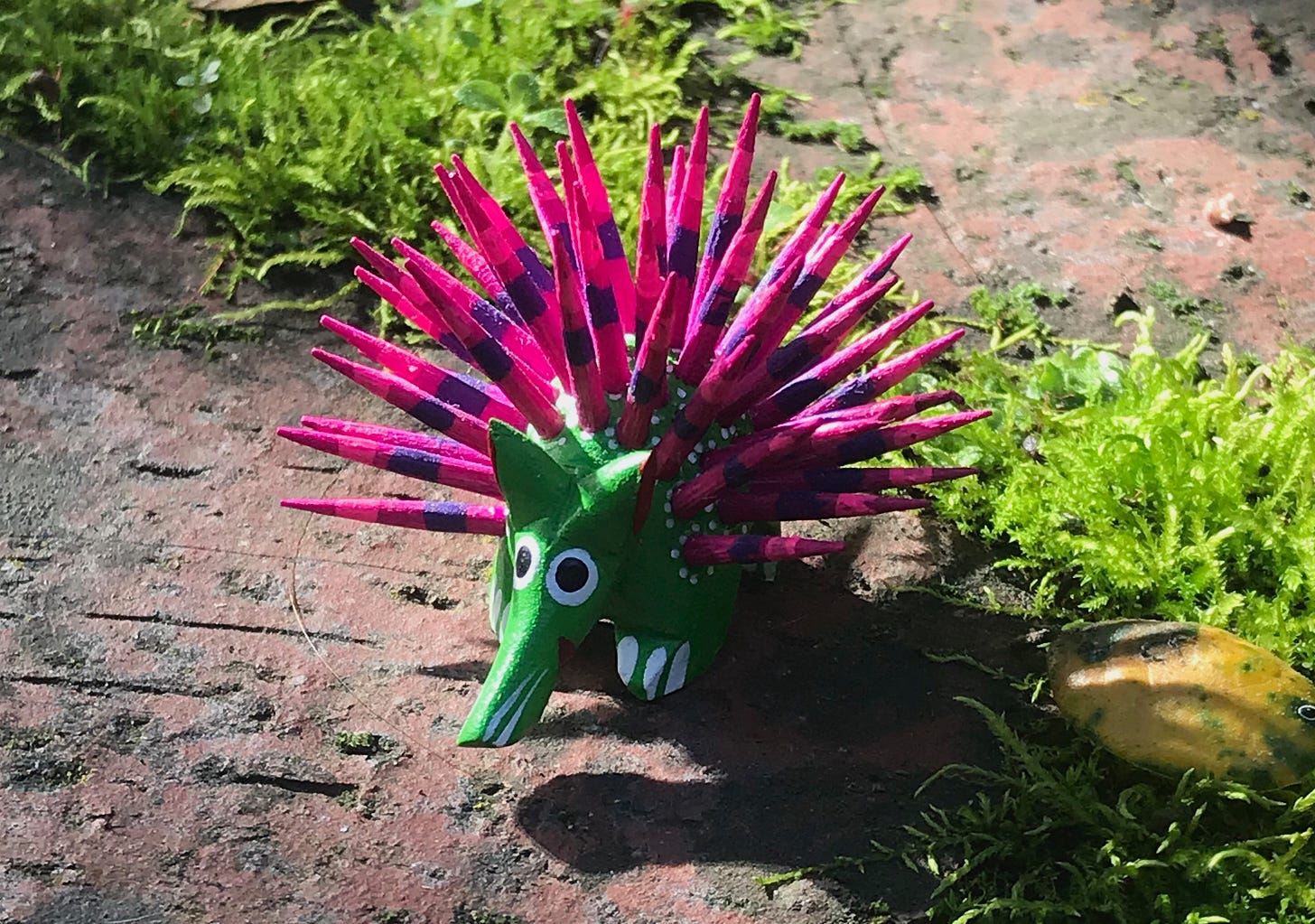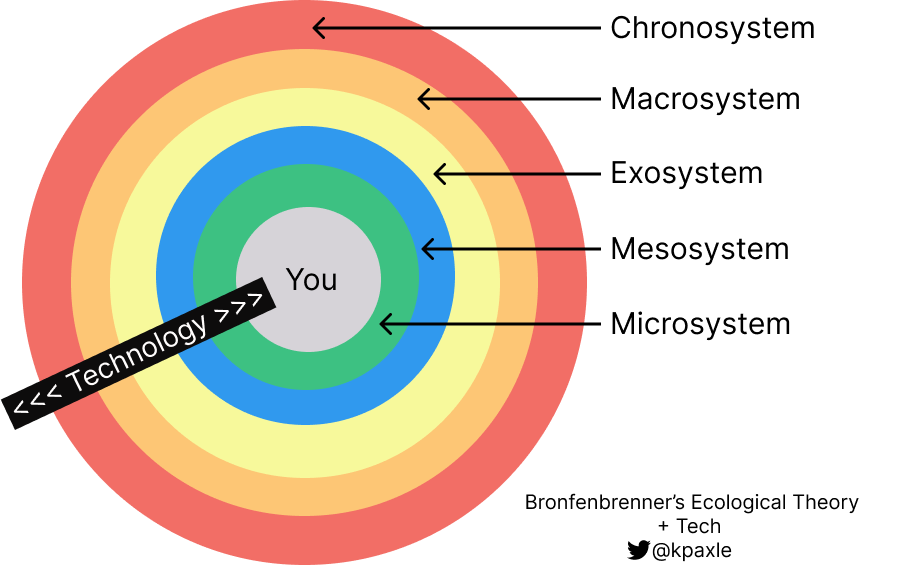Life with Technology
In this week’s newsletter, I begin an exploration of my relationship with technology. I’d love to hear from you as you read along - what is your relationship with tech? Are you aware of how and when you’re using it?

🎧“Expanding Mind” Podcast Episode About Meditation Apps
The other day I listened to a podcast episode featuring an interview with researcher Rebecca Jablonsky. She hooked me as she talked about the paradox of tech being both the cause and the solution to many modern problems. Problems like: feeling overwhelmed, lonely, unable to focus, experiencing addiction behaviors, and more. And solutions like: meditation guides, exercise tracking, meaningful social networks, etc.
Jablonsky was clear that there is a movement away from the “escape tech” paradigm towards an approach that embraces and seriously considers how to best work within technology’s parameters. In her research she sees tech as a way to encourage personal growth and healing. All of this resonates deeply with me.
In Jablonsky’s research, she uses the mental model of an informational ecosystem, an environment that we each inhabit as individuals that includes other people, and technology.
“A mental model is simply a representation of how something works. We cannot keep all of the details of the world in our brains, so we use models to simplify the complex into understandable and organizable chunks.” - Farnam Street blog
What struck me was the similarity between the informational ecosystem model and the “person in environment“ model of social work. Having studied social work in graduate school, this mental model made perfect sense. So I dug deeper.
🤔Person-In-Environment: Bronfenbrenner’s Ecological Theory
I refreshed my memory on the “person in environment” model I learned in grad school, and a related theory I’ve used throughout my career: Bronfenbrenner’s Ecological Theory. I realized that I could add technology to the theory because it touches all areas of the human ecosystem.

The “person-in-environment” mental model, or ecological theory, is broken into a number of subsystems that surround you:
- Microsystem - the people and systems with the closest impact (friends, family, workplace, neighborhood, online communities)
- Mesosystem - interactions between microsystems (e.g. relationship with friends or neighborhood)
- Exosystem - systems with indirect impact (governmental, economic, religious)
- Macrosystem - larger cultural and societal beliefs (norms and values)
- Chronosystem - transitions and phases that take place over time - personal and societal growth, or evolution
The theory of ecology is fairly straightforward—you’re at the center of all of these systems, and they all impact you in various ways—some direct, some indirect. There are interactions within and between sub-systems, too. I’ll walk through these subsystems over the next few weeks, starting from the middle and working my way out.
🎯Exploring My Relationship with Tech Part 1: Starting at the Center
I’m only beginning to understand my dynamic relationship with technology and how we shape each other. There are a lot of behaviors and habits that I need to work on, and this is a work in progress. My main interest in writing about this and exploring my relationship with tech is to become more purposeful in how and when I use it. This week, I’ll focus on personal tooling within my direct sphere of influence (the most central circle, or “you” in ecological theory).
I welcome everyone to join me in the pursuit of defining a more purposeful relationship with technology—write down all of the tools that you use day in and day out. When are you using them? And for what? Do you like this relationship? What would you change?
Morning and Evening Rules
One of the first things I’ve noticed is the loose tech rules I’ve set for myself in the morning and evening. I don't bring my phone into the bedroom when I go to sleep, and I don't check my phone first thing in the morning.
There are a few pieces of tech that I do bring into the bedroom: my Kindle for reading, an old iPhone for dream journaling (always in airplane mode, I only use the Apple Notes app), and my Apple Watch. I’m comfortable with my relationship to the Kindle and the dream journal iPhone - my routine use of these devices feels purposeful and healthy.
Hoo-boy, do I have bad habits around checking my watch first thing in the morning! My “hack” of not bringing my phone to bed with me is a farce. On my watch, I check email, texts, the weather for the day, how long I slept and quality of sleep, and my heart rate.
How I use my watch in the morning, to essentially firehose myself with information, is ridiculous. I’m using an interface where I can’t even fully engage with the information I’m consuming. The font is tiny, I can’t see photos well. I’m procrastinating, which is not an ideal way to wake up. I’m currently working on breaking the habit of checking my watch upon awakening. I did come up with a good trick to help me: turn the watch to airplane mode at night—this way I stick to only checking my sleep tracker in the morning.
I’ve also noticed that I’m getting pulled into my computer in the morning, before my daily yoga and meditation practice. I often practice yoga through an online portal, so I’m using my computer to pull up a class. Sometimes, more often when I’m feeling stress with work, I’ll “cheat” before I start yoga, indulging in little things like checking Slack and Twitter. Often, I revisit the very same things I just viewed on my watch: texts and emails. This is another habit I’m working on nipping in the bud.
Using Tech Throughout The Day
I’ll start by sharing a few ways I’m purposeful in my personal tech usage and how this has positively impacted my life:
- I use my watch to track my exercise—every time I practice yoga, walk around the neighborhood, ride my bike, or hike, I log my activity. I set a daily movement goal in terms of calories burned and currently am on a 34 consecutive day streak of hitting my goal.
- I use my computer at least once a day to practice yoga using a product called Glo—it’s such a great tool and it only costs $18/month! There are hundreds of classes with different styles, teachers, and session lengths. For the first time in my life I’ve habituated daily activity with the help of Glo and I’m actively strengthening my mind and body connection.
- I use the timer on my watch for cooking, meditation, laundry, a wakeup alarm, and all kinds of other reminders. While this may seem trivial, I’m extremely appreciative of the utility of having the timer on my wrist.
There are other aspects of my relationship with tech that aren’t so positive. I really don’t like how disruptive technology can be, so I’ve turned all notifications off—everywhere. On my computer, phone, and watch. Any incoming communication is silenced and all pop-up notifications are disabled, including phone calls, text messages, Slack chats, and emails. I only check-in with my devices when I want to. However, as I’ve described above, “when I want to” can be a slippery slope for compulsive check-in behavior.
Building a software company means that I can’t avoid spending a lot of time with tech. I haven’t found an easy answer to the “best” way to work with it throughout the day—I imagine this will be an ongoing, evolving process. I’ve pondered how to schedule my day, wondering if there is a routine I can follow for when I check my email, texts, phone calls, Slack, and Twitter. I don’t know my ideal schedule, yet. These tools introduce another element to my relationship with tech: how I’m using it to interact with other people. I’ll get into this more in next week’s newsletter when I write about the micro and mesosystems.
📚Footnotes and Resources
“How to Do Nothing: Resisting the Attention Economy” by Jenny Odell
While the “Expanding Mind” podcast interview with Rebecca Jablonsky got me thinking about ecological systems, I’m also influenced by Odell’s book: “How to Do Nothing”.
The book is about resisting the so-called attention economy—as a result of technology, there’s an immediate abundance of information available to us, which means our attention has become a scarce resource. I’m only a third of the way through the book, and Odell is giving me a lot of food for thought.
Ponder Prompts
Another nudge towards exploring my relationship with tech is actually through our thinking tool, Ponder. One of the ways we’re engaging with our Ponder testers is through a prompt system. To facilitate the prompts, we’ve introduced a chat bot to our Slack channel: Ponderto.
Ponderto is periodically messaging folks in the channel with prompts that they can answer in Ponder. One of the prompts we came up with was: “If I had to describe my relationship with technology, I’d say…” This simple prompt got me to writing about my relationship with tech and I realized it was definitely time to take a closer look.

